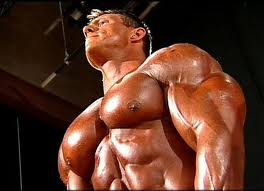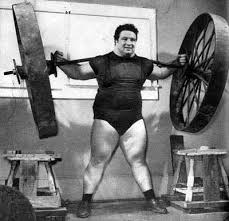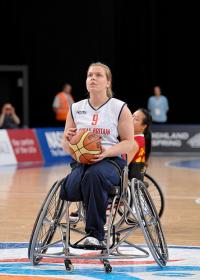Main Menu
Latest Blog Entry
User login
Skeletal Muscle Hypertrophy: an overview. Mike Stone
Mike Stone’s lecture about endocrin influences on hypertrophy training.
 A review of a lecture I attended at the UKSCA conference a few years ago. T
A review of a lecture I attended at the UKSCA conference a few years ago. T
he lecture was quite technical at a cellular level and offered an overview of different factors affecting the body’s ability to adapt to hypertrophy training.
Stone overviewed research on Eccentric Accelerated Training that may increase hypertrophy. The damage caused by training leads to inflammation with autocrine and paracrine effects which produce Mitogens.
(An example of a Mitogen is IGF-1 a protein which has 70 amino acids, produced in the liver it is a primary factor in growth hormone release, see picture below).
Stone then looked at the roles of the enzymes AMPK and mTORC1 on the adaptations to resistance training. AMPK is related to endurance training and inhibits growth within the muscle.
mTORC1 is activated by Resistance training and it inhibits myostatin release. Myostatin inhibits growth, so less Myostatin helps muscular growth.
 The endocrine influences in the acute term (10-40 minutes post exercise) show an increase in Testosterone and Human Growth Hormone. The theory that large muscle groups produce more than small muscle groups is questionable.
The endocrine influences in the acute term (10-40 minutes post exercise) show an increase in Testosterone and Human Growth Hormone. The theory that large muscle groups produce more than small muscle groups is questionable.
More importantly, the chronic endocrine responses do increase growth, especially with an increase in overall testosterone. Training plus higher resting testosterone equals:
- less fat
- greater hypertrophy
- increased strength
- increased explosiveness
- increased power.
Insulin helps protein synthesis by increasing levels of MTORC1. But as Insulin is decreased as a result of a training session, some form of carbohydrate and protein meal will release insulin and therefore help hypertrophy.
So to create hypertrophy, there needs to be adequate stimulus and also correct nutrient intake and timing.
“Fatigue Management is key”
 Stone spent the next part of the lecture looking at reasons why managing fatigue is key to an increase in muscle hypertrophy.
Stone spent the next part of the lecture looking at reasons why managing fatigue is key to an increase in muscle hypertrophy.
The testosterone:Cortisol ratio is crucially important in providing adequate growth. If training volume increases then the T:C ratio drops. A period of unloading results in an increase in T:C ratio, which is good just before competing.
A drop in the T:C ratio is nothing to panic about, it is a normal part of the adaptation process, but too much is an indicator of overtraining.
Heredity could be the the biggest factor in training adaptation, especially with regards to recovery (I question the research on this- unless you have subjects in a big brother house, how sure are you gong to be of their lifestyle away from training?).
The total work done may be more important than reps per set amongst all groups, except beginners. Stone stated that cross sectional area of thighs in bodybuilders, weightlifters and powerlifters were all the same- despite very different training methods.
They just all train hard and for a long time. Bodybuilders look bigger because they train the non- lifting muscles a lot.
 Training to failure may be unnecessary for hypertrophy. In fact ballistic type exercises may be more useful because they recruit higher threshold motor units.
Training to failure may be unnecessary for hypertrophy. In fact ballistic type exercises may be more useful because they recruit higher threshold motor units.
Keeping something in the tank also increases IGF-1 and testosterone, without increasing cortisol. Again that comes down to fatigue management.
So having less than 2 minutes rest between sets, even for hypertrophy, may be inadequate because you are unable to lift heavy.
Summary
Overall, quite interesting in theory, but I get the impression that the weightlifting academics think that walking up a flight of stairs is an endurance workout.
I am uncertain how this research applies to anyone other than body builders, students or weightlifters i.e people who do real sports that require movement and will have some residual fatigue.
(I must put a disclaimer in- it was the third in a series of 3 lectures on Friday afternoon, the lecture room was warm, people to the left and right of me were asleep, it was hard to concentrate.)
Further reading:
- Strongman training principles with Glenn Ross
- How to get big for rugby
- Get stronger training programme
Client Testimonials
 Judith Hamer – GB Wheelchair Basketball, Paralympian
Judith Hamer – GB Wheelchair Basketball, Paralympian
I have worked with James for three years now. James's attitude to training has changed my approach to my training session and sport making me more focussed and organised to get as much as I can out of each session. The improvements I have made with my fitness, core and my psychological approach to training have been largely down to my sessions with James
More

